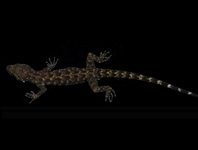Abstract
Three new species of ghost moth, Oxycanus ephemerous sp. nov., O. flavoplumosus sp. nov., and O. petalous sp. nov. are described from South Australia, New South Wales, and south-west Western Australia, respectively. We illustrate these species and compare morphological and molecular (mtDNA COI gene) characters with similar Oxycanus Walker, 1856 species from Australia. Comparative images of Oxycanus subvaria (Walker, 1856), O. byrsa (Pfitzner, 1933), and O. determinata (Walker, 1856) are figured. The type material of the three new species are held in the Australian National Insect Collection, Canberra, the Western Australian Museum, Perth, and in the South Australian Museum, Adelaide. The type specimens of Oxycanus hildae Tindale, 1964 syn. n. were also examined and the taxon is here considered synonymous with O. subvaria. Concerns are raised about the conservation status of all three new species due to few or localised distribution records.
References
Australian Bureau of Meteorology (2019) Climate Data Online, Commonwealth of Australia Bureau of Meteorology, ABN 92637533532. Available from: http://www.bom.gov.au/climate/data/index.shtml (accessed 10 April 2019)
Brown, B., Emberson, R.M. & Paterson, A.M. (1999) Phylogeny of “Oxycanus” lineages of hepialid moths from New Zealand inferred from sequence variation in the mtDNA COI and II gene regions. Molecular Phylogenetics and Evolution, 13 (3), 463–473.
https://doi.org/10.1006/mpev.1999.0662
Chu, H.F. & Wang, L.Y. (1985) “Insect-herb” versus hepialids with descriptions of new genera and new species of Chinese Hepialidae. Sinozoologia, 3, 121–134.
Dorey, J.B., Schwarz, M.P. & Stevens, M.I. (2019) Review of the bee genus Homalictus Cockerell (Hymenoptera: Halictidae) from Fiji with description of nine new species. Zootaxa, 4674 (1), 1–46.
https://doi.org/10.11646/zootaxa.4674.1.1
Dugdale, J.S. (1994) Hepialidae (Insecta: Lepidoptera). Fauna of New Zealand, Canterbury, New Zealand, 30, 1–164.
Edwards, E.D. & Green, K. (2011) Two new species of Oxycanus Walker (Lepidoptera: Hepialidae) from Kosciuszko National Park, one with a sub-brachypterous female. Australian Journal of Entomology, 50, 78–85.
https://doi.org/10.1111/j.1440-6055.2010.00790.x
Felsenstein, J. (1985) Confidence limits on phylogenies: An approach using the bootstrap. Evolution, 39, 783–791.
https://doi.org/10.1111/j.1558-5646.1985.tb00420.x
Folmer, O., Black, M., Hoeh, W., Lutz, R. & Vrijenhoek, R. (1994) DNA primers for amplification of mitochondrial cytochrome c oxidase subunit I from diverse metazoan invertebrates. Molecular Marine Biology and Biotechnology, 3, 294–299.
Grehan, J.R. (2011) Notes on the biogeography of eastern Asian ghost moths (Lepidoptera:
Hepialidae). Bulletin of the Buffalo Society of Natural Sciences, 40, 59–74.
Grehan, J.R. (2012) Morphological evidence for phylogenetic relationships within the Hepialidae (Lepidoptera: Exoporia). Bulletin of the Buffalo Society of Natural Sciences, 42, 33–62.
Grund, R., Stolarski, A. & Stevens, M.I. (2019) Rediscovery of Synemon selene (Lepidoptera: Castniidae) in the mid-north of South Australia. Transactions of the Royal Society of South Australia, 143 (1), 86–91.
https://doi.org/10.1080/03721426.2018.1532270
Hardy, R.J. (1974) The biology and pest status of Oxycanus fuscomaculatus Walker (Lepidoptera: Hepialidae) in Tasmania. Journal of the Australian Entomological Society, 13, 317–328.
https://doi.org/10.1111/j.1440-6055.1974.tb02211.x
Hausmann, A., Haszprunar, G. & Hebert, P.D.N. (2011) DNA Barcoding the Geometrid Fauna of Bavaria (Lepidoptera): Successes, Surprises, and Questions. PLoS ONE, 6 (2), e17134.
https://doi.org/10.1371/journal.pone.0017134
Kallies A., Marriott P. & Hewish M. (2015) Moths of Victoria. Vol. 36. Part 6. Ghost moths, Hepialidae and Allies. Entomological Society of Victoria, Melbourne, 36 pp. + 1 CD.
Kumar, S., Stecher, G., Li, M., Knyaz, C. & Tamura, K. (2018) MEGA X: Molecular Evolutionary Genetics Analysis across computing platforms. Molecular Biology and Evolution, 35, 1547–1549.
https://doi.org/10.1093/molbev/msy096
Li, W. & Wei, H. (2014) Notes on the genus Napialus Chu & Wang (Lepidoptera: Hepialidae), with description of a new species from China. Zootaxa, 3793 (3), 387–392.
https://doi.org/10.11646/zootaxa.3793.3.7
Mielke, C.G.C. & Grehan, J.R. (2016) A new species of Hepialiscus Hampson, [1893], Lepidoptera: Hepialidae) from Myanmar. The European Entomologist, 8 (3), 133–151.
Nei, M. & Kumar S. (2000) Molecular Evolution and Phylogenetics. Oxford University Press, New York, 348 pp.
Nielsen, E.S. (1996) Hepialidae s. lat. In: Nielsen, E.S., Edwards, E.D. & Rangsi, V. (Eds.), Checklist of the Lepidoptera of Australia. Monographs on Australian Lepidoptera, CSIRO Publishing, Collingwood, Victoria, pp. 1–529.
Nielsen, E.S. & Kristensen, N.P. (1989) Primitive Ghost Moths, Morphology and taxonomy of the Australian genus Fraus Walker (Lepidoptera: Hepialidae s. lat.). In: Monographs on Australian Lepidoptera. Vol. 1. CSIRO Publishing, East Melbourne, Victoria, pp. 1–206.
https://doi.org/10.1071/9780643105096
Nielsen, E.S., Robinson, G.S. & Wagner, D.L. (2000) Ghost-moths of the world: a global inventory and bibliography of the Exoporia (Mnesarchaeoidea and Hepialoidea) (Lepidoptera). Journal of Natural History, 34, 823–878.
https://doi.org/10.1080/002229300299282
Pfitzner, R. (1933) s.n. In: Seitz, A. (Ed.), Die Indo-Australischen Spinner und Schwärmer. Die Grossschmetterlinge der Erde, 10, pp. 909.
Posada, D. & Crandall, K.A. (1998) Modeltest: testing the model of DNA substitution. Bioinformatics, 14, 817–818.
https://doi.org/10.1093/bioinformatics/14.9.817
Simonsen, S.J. (2015) Elhamma Walker (Lepidoptera: Hepialidae) revisited: adult morphology, assessment of recently proposed synonyms and descriptions of two species. Zootaxa, 3955 (3), 301–328.
https://doi.org/10.11646/zootaxa.3955.3.1
Simonsen, T.J. (2018) Splendid Ghost Moths and their Allies, A Revision of Australian Abantiades, Oncopera, Aenetus, Archaeoaenetus and Zelotypia (Hepialidae). In: Monographs on Australian Lepidoptera. Vol. 12. CSIRO Publishing, Melbourne, pp. 1–300.
https://doi.org/10.1071/9781486307487
Simonsen, T.J., Moore, M.D., Dupont, S.T. & Stevens, M.I. (2019) Testing DNA barcodes against morphology for the ‘tripectinate Abantiades’ (Lepidoptera: Hepialidae) reveals a complex relationship between COI sequence data and morphology. Austral Entomology, 58 (4), 792–799. [https://onlinelibrary.wiley.com/doi/pdf/10.1111/aen.12395]
https://doi.org/10.1111/aen.12395
Swofford, D. (2002) Paup* version 4.0. Phylogenetic Analysis Using Parsimony (and Other Methods). Sinauer Associates, Sunderland, MA. [program]
Tindale, N.B. (1935) Revision of the Australian ghost moths (Lepidoptera Homoneura, Family Hepialidae) Part III. Records of the South Australian Museum, 5, 275–332.
Tindale, N.B. (1955) Revision of the ghost moths (Lepidoptera Homoneura, Family Hepialidae) Part VI. Records of the South Australian Museum, 11, 307–344.
Tindale, N.B. (1964) Revision of the ghost moths (Lepidoptera Homoneura, Family Hepialidae) Part VIII. Records of the South Australian Museum, 14, 663–668.
Viette, P.E.L. (1953) Contribution à l’etude des Hepialidae. Lambillionea, 53, 32–35.
Walker, F. (1856) Lepidoptera Heterocera. List of the Specimens of Lepidopterous Insects in the Collection of the British Museum, 7, 1508–1808.

